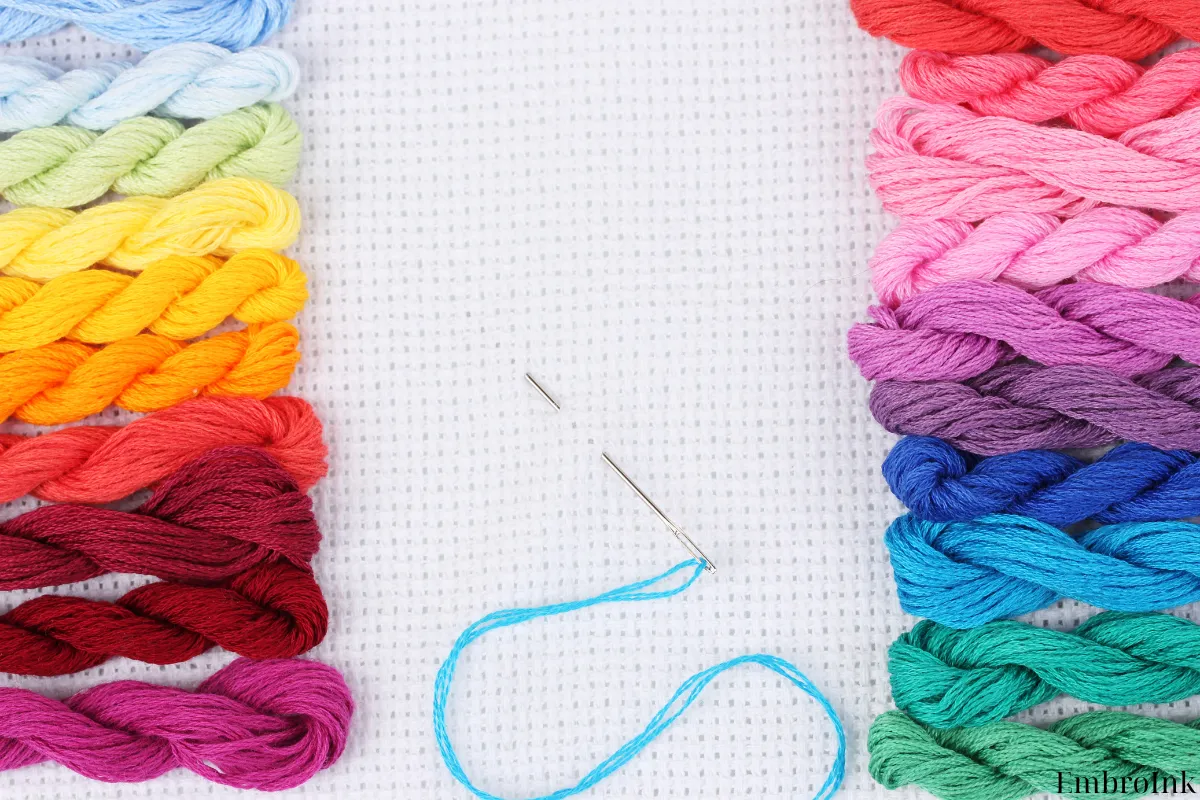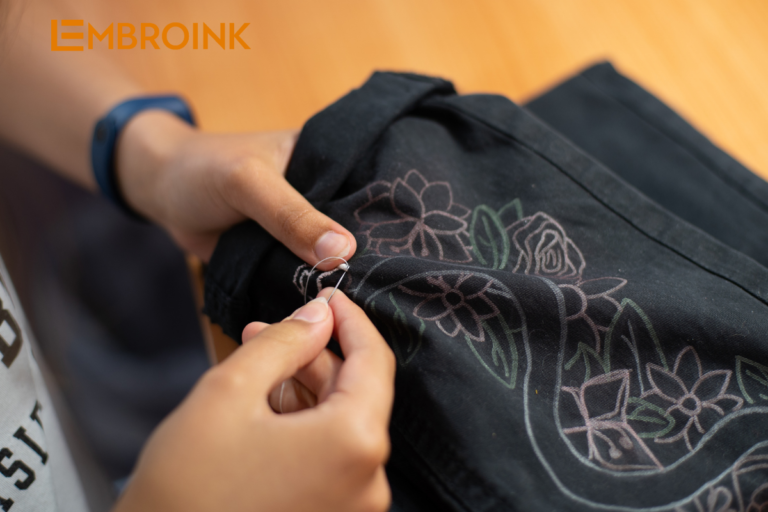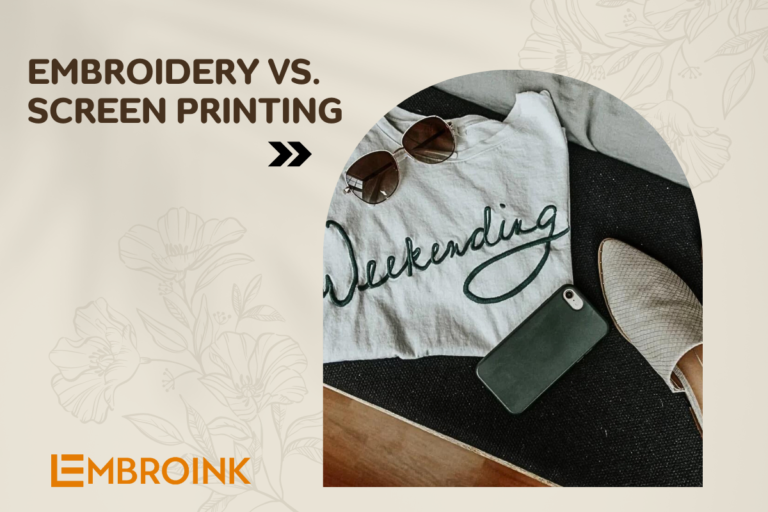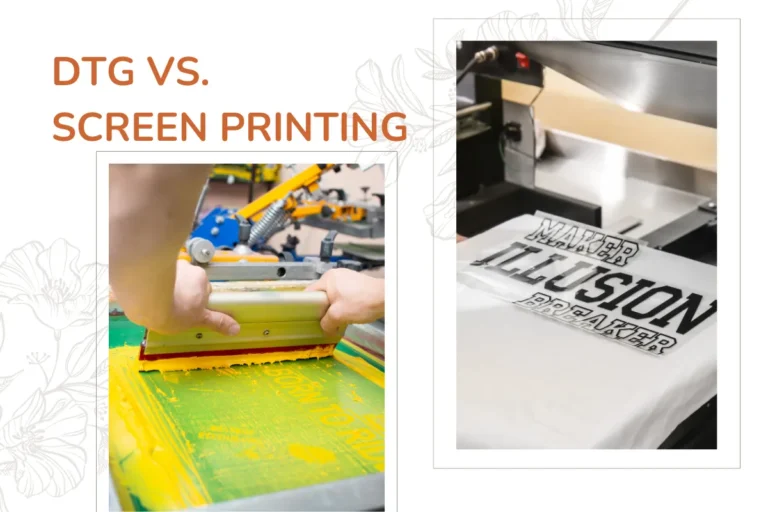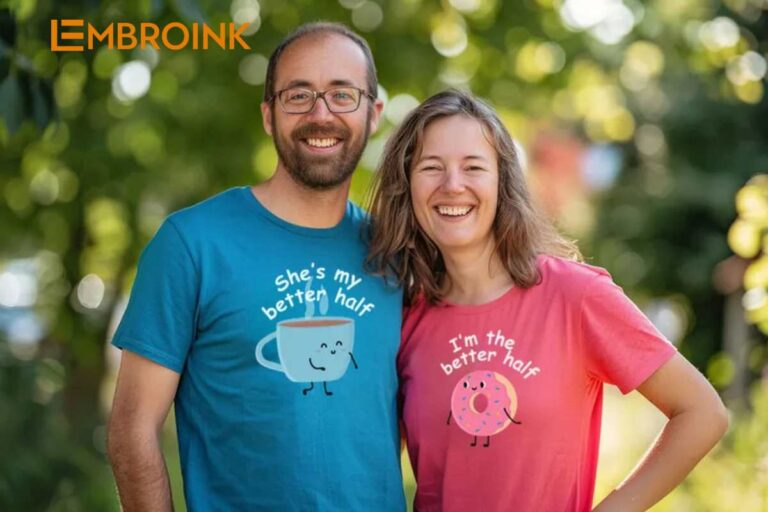How to choose the fabric and color for custom embroidery
Selecting fabrics and colors is not merely a part of the production process but also a determining factor for the success of each embroidered design. Fabrics and colors are not just aesthetic elements; they carry profound meanings and emotions that the embroiderer seeks to convey. From choosing the appropriate fabric to delicately arranging colors, every decision influences the final outcome of the embroidery piece. In this article, let’s delve deeper into the significance of fabric and color selection in custom embroidery patterns with EmbronInk.
Factors to consider when choosing a fabric

The fabric is suitable for the embroidery pattern
When selecting the type of fabric for an custom embroidery pattern, identifying the intended use of the product is the crucial first step. This helps to define the style and nature of the product, thereby making accurate decisions regarding the appropriate fabric type. For example, if the purpose is to make a garment, elastic fabrics like cotton or jersey might be a good choice as they offer comfort and ease of movement. On the other hand, if the embroidered pattern is intended for decorative pillows, choosing fabrics like linen or velvet can create an elegant and sophisticated look.
Furthermore, when choosing fabric, it’s important to consider its characteristics such as elasticity, durability, absorbency, and background color. For instance, if the embroidery pattern requires intricate and complex stitching, a fabric like cotton with good elasticity and ease of embroidery might be the top choice. For products requiring durability and absorbency, linen fabric could be an ideal option with its strong structure and good sweat absorption capability. This demonstrates careful consideration of each fabric characteristic to ensure that each embroidered pattern is showcased on the fabric surface in the best possible way.
Characteristics of each fabric
When considering the characteristics of each type of fabric, we have:
- Cotton Fabric: One of the most common fabrics for embroidery, cotton fabric is easy to embroider and ensures the stability of the embroidered pattern. Particularly, cotton fabric has good sweat absorption, making the embroidered product comfortable to use. This type of fabric is often preferred for embroidering detailed patterns because they offer high precision and durability of the embroidered design.
- Linen Fabric: With its strong structure and high durability, linen fabric creates a natural and luxurious feel for embroidered products. This characteristic makes linen fabric suitable for simple or decorative embroidery patterns, while also adding uniqueness and refinement to the final product.
- Satin Fabric: Satin fabric is known for its softness and sheen, adding a luxurious touch to any embroidered pattern. The shimmer of satin fabric makes embroidered details stand out and become more captivating, while also creating an alluring and enticing beauty.
Each type of fabric brings a unique set of characteristics, making fabric selection flexible and diverse, suitable for the purpose and style of each specific embroidery project.
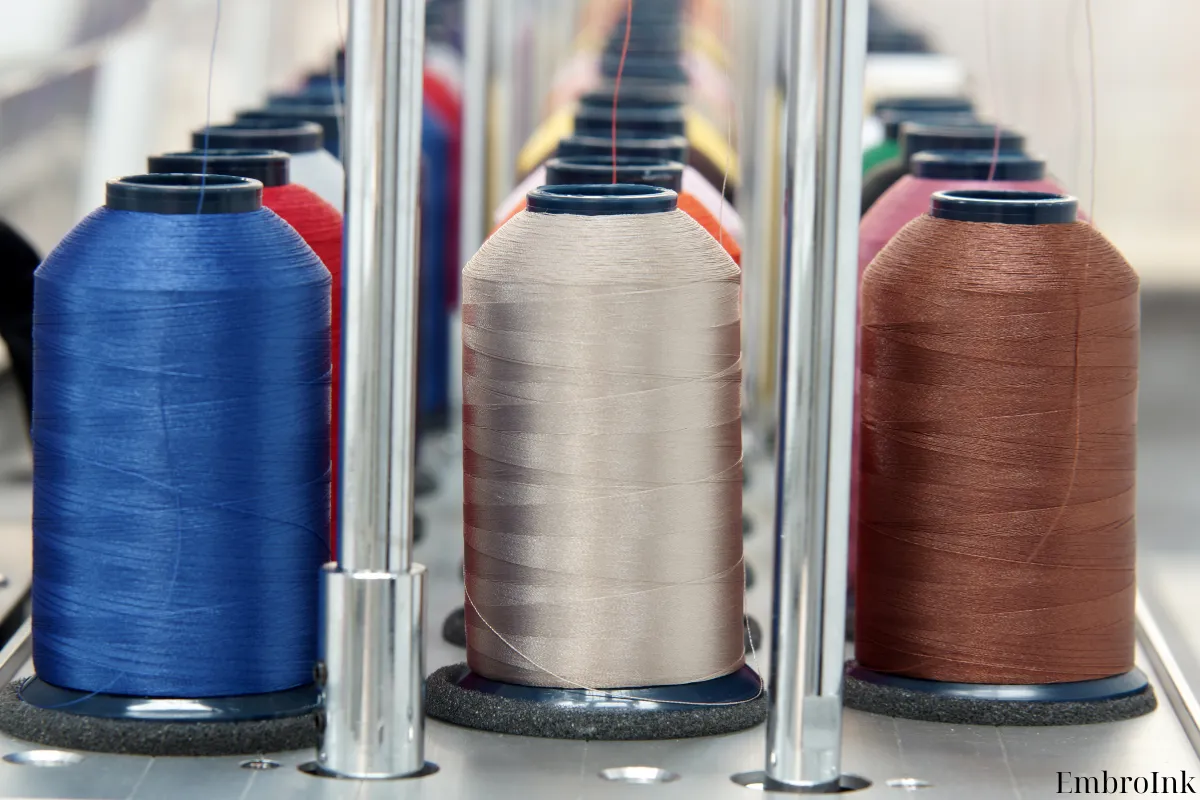
Match between fabric and embroidery pattern
During the embroidery process, the coordination between fabric and embroidery design plays a crucial role in creating a perfect and impressive product. Here are two factors to consider when coordinating fabric and embroidery design:
- Achieving balance between fabric and custom embroidery design: Choosing a fabric that complements the embroidery design helps create balance and consistency in the final product. Fabric that is too busy or has intricate patterns may detract from the prominence of the embroidery design, making the product look cluttered and lacking refinement. Therefore, it’s important to select fabric with colors and patterns that complement the embroidery design to create balance and harmony.
- Ensuring the colors of the fabric harmonize with the colors of the embroidery design: Another important factor is ensuring that the colors of the fabric harmonize with the colors of the embroidery design. This helps create a cohesive and impressive overall look for the embroidered product. The colors of the fabric and embroidery design should contrast each other reasonably, creating focal points and attracting attention, while still coordinating in a coherent and aesthetically pleasing manner.
Proper coordination between fabric and custom embroidery design is the determining factor in creating a beautiful and high-quality embroidered product. Careful consideration and selection of the right fabric along with appropriate colors will result in a final outcome that exceeds expectations.
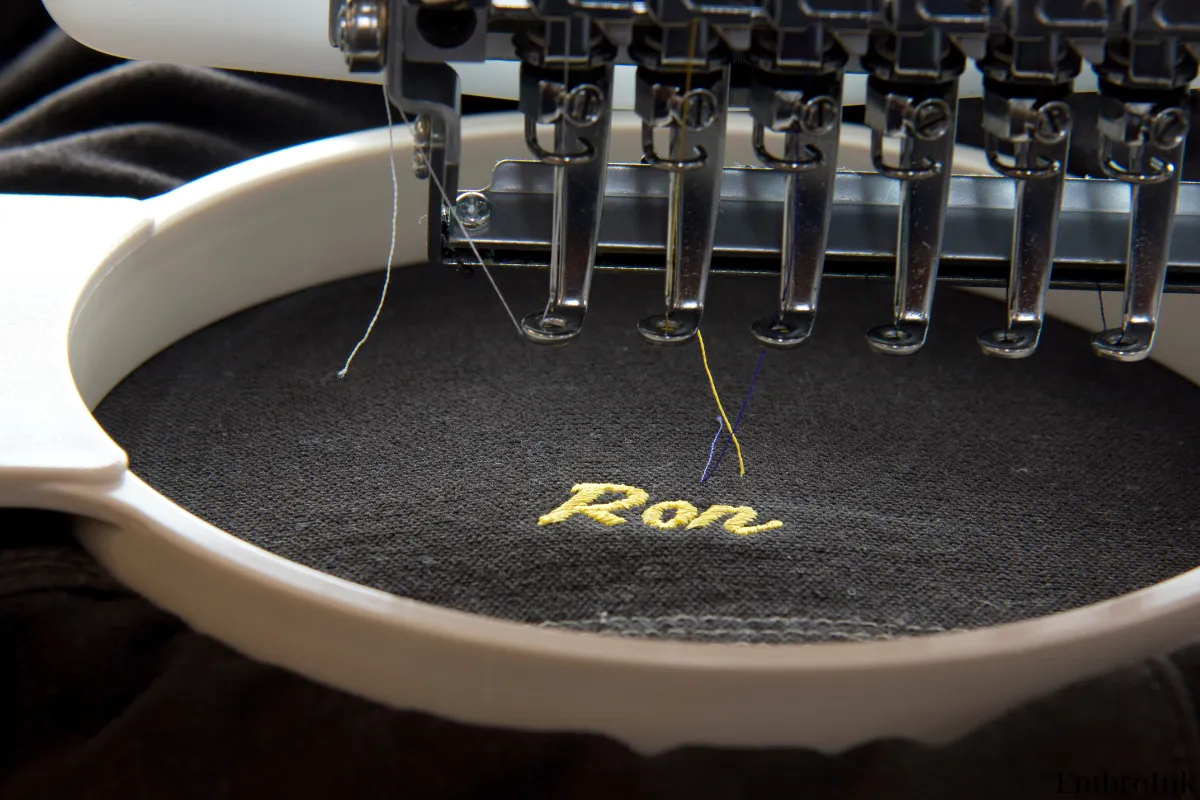
How to choose embroidery fabric colors
Color analysis in custom embroidery patterns
Analyzing color in embroidery patterns is an important step to gain a deeper understanding of how colors are used and interact within the artwork. Here are two aspects to consider when analyzing color in embroidery patterns:
Analyze the colors used in the current embroidery pattern:
- Examine the total number of colors used and the percentage of each color.
- Evaluate the intensity and brightness of each color to understand how they create contrast and depth in the artwork.
- Analyze how colors are used to create specific details, structures, and special effects in the embroidery pattern.
Identify color contrasts and harmonious elements in the custom embroidery pattern:
- Learn about color contrasts such as the contrast between prominent colors and background colors, or between warm and cool colors.
- Evaluate how colors interact with each other to create harmony or contrast.
- Analyze the use of color to evoke emotions or convey messages in the embroidery pattern.
By carefully analyzing color, embroiderers can gain a better understanding of how color influences the meaning and aesthetics of the artwork, thereby enhancing their ability to design and execute embroidery patterns.
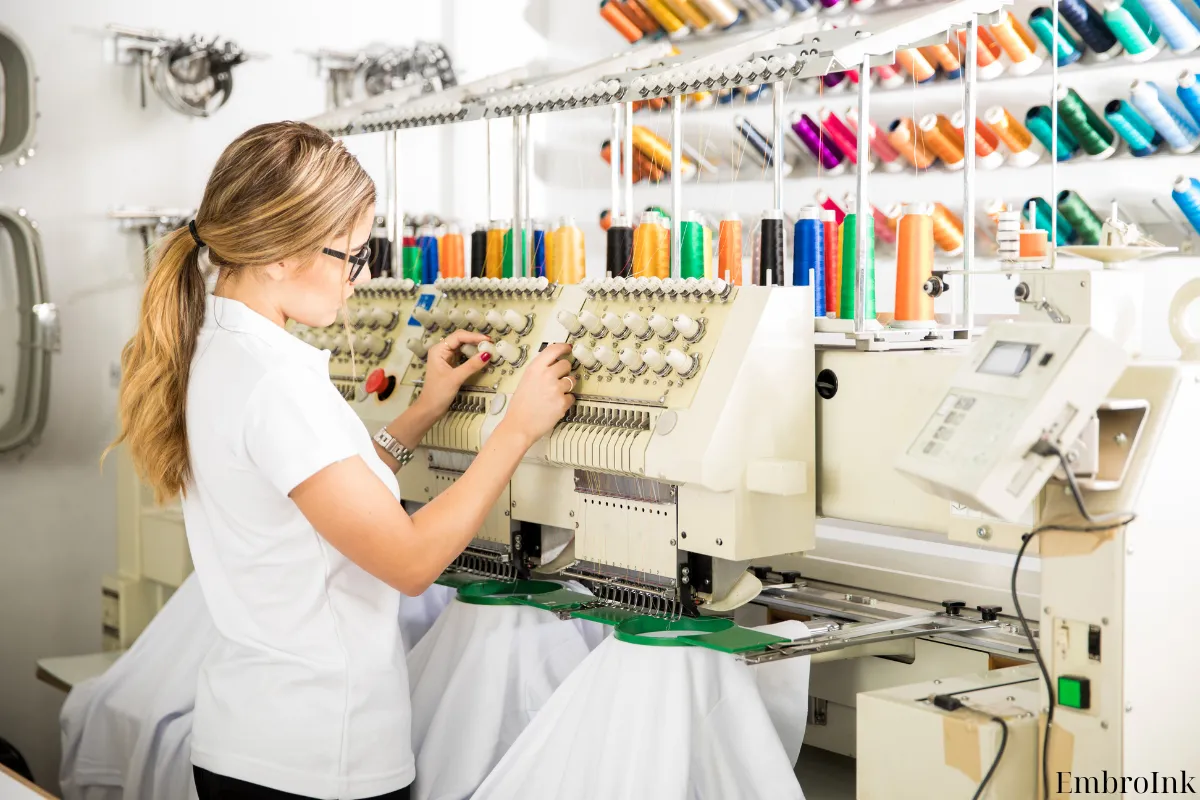
Colors match fabrics and designs
When choosing colors for an custom embroidery pattern, coordinating the fabric color with the colors used in the embroidery design plays a crucial role in creating harmony and balance for the final product.
Firstly, consider the colors of the fabric and the colors of the embroidery pattern to create harmony and balance. A color that complements the fabric can highlight and enhance the details of the embroidery pattern, while a mismatched color may detract from the focal points of the product. Smart color coordination and consideration between the fabric and the embroidery pattern will result in a cohesive and impressive overall look.
Secondly, consider the intended environment of the embroidered product to choose colors that suit the context. For example, a brightly colored and vibrant embroidery product may be suitable for environments where lively and striking colors are appropriate, while an embroidered product used for workplace decoration may require subdued and uniform colors. Choosing colors that fit the context will create appropriateness and a certain impression in each usage scenario.
The meaning of colors in custom embroidery patterns
Understanding the significance of color is an important part of the design and execution process of custom embroidery patterns.
Mastering the meaning of each color in cultural and emotional contexts. Each color carries its own meaning and emotion, shaped by culture and tradition. For example, red is often associated with passion, love, and power, while blue symbolizes peace and tranquility. By understanding the meaning of each color, embroiderers can choose appropriate colors to convey a specific message or emotion in the embroidered product.
Applying the meaning of colors to create a desired message or emotion in the embroidered product. Colors can be used as a tool to tell a story, express ideas, or convey mood. For example, using green may evoke a sense of closeness to nature and the natural environment, while bright yellow can create a sense of joy and optimism. By using colors intelligently and sensitively, embroiderers can create an embroidered product that is both captivating and deeply meaningful.

Tips for choosing fabrics and colors in custom embroidery
- Practice and test before embroidering: Before starting to embroider on the actual product, practice on a small piece of fabric and test the technique, embroidery pattern, and colors. This helps you feel more confident and avoid unwanted errors on the final product.
- Use supporting tools to select colors and fabric: There are many online tools and mobile apps that can help you accurately choose colors and fabric. Take advantage of these tools to easily compare and select the most suitable options for your project.
- Learn more about market trends: Keeping up with new trends in the embroidery industry can help you create products that align with the preferences and needs of customers. This can increase the value and appeal of your embroidered products in the market.
In the process of selecting fabric and colors for custom embroidery patterns, considering and applying fundamental principles is crucial. From understanding the characteristics of each type of fabric to harmoniously and creatively coordinating colors, every step influences the final outcome of the embroidered product. With meticulousness, creativity, and profound knowledge of fabric and colors, each custom embroidery pattern can become a unique work of art, reflecting the individuality and personal style of everyone involved.

